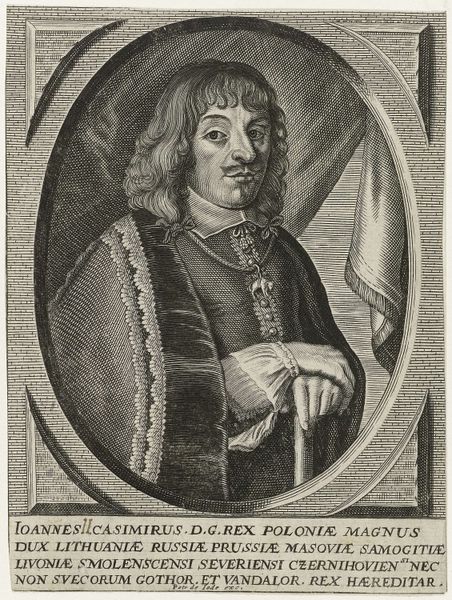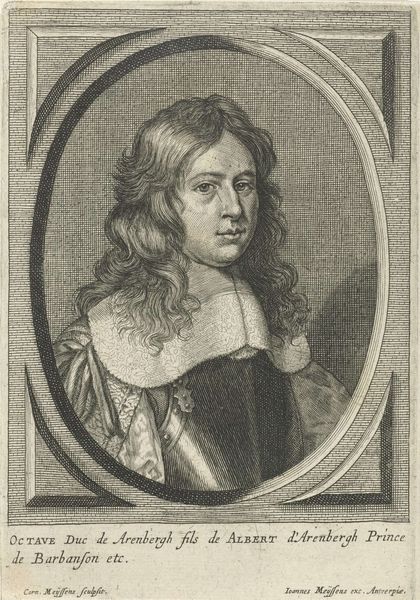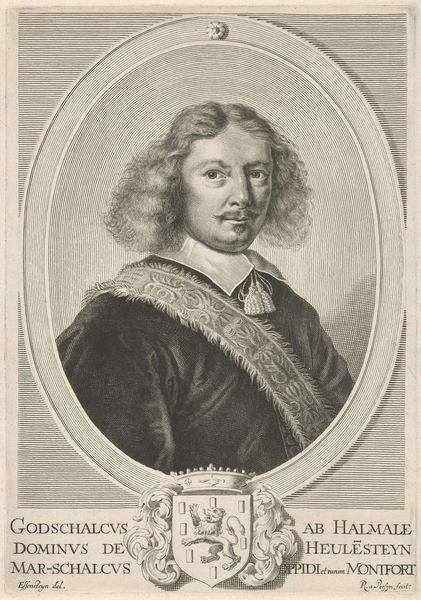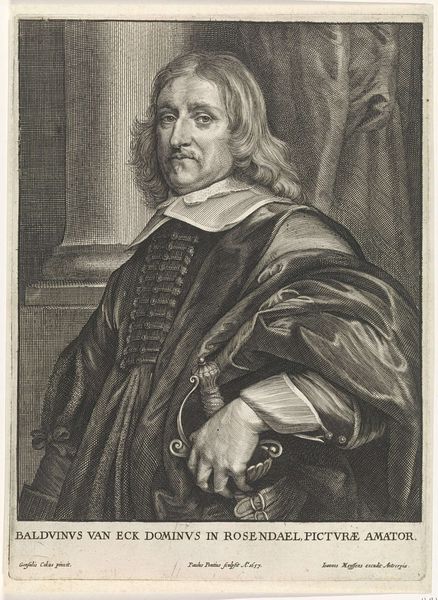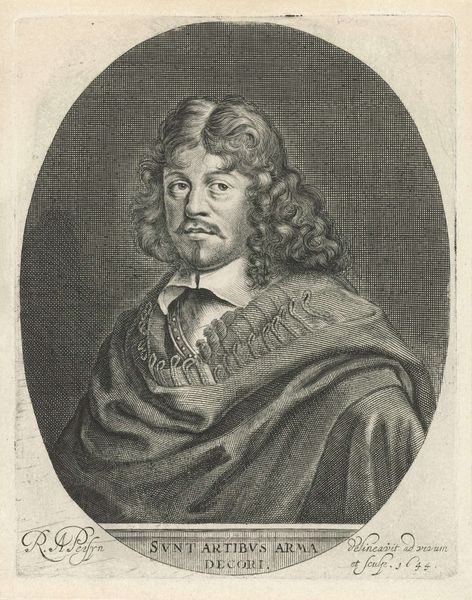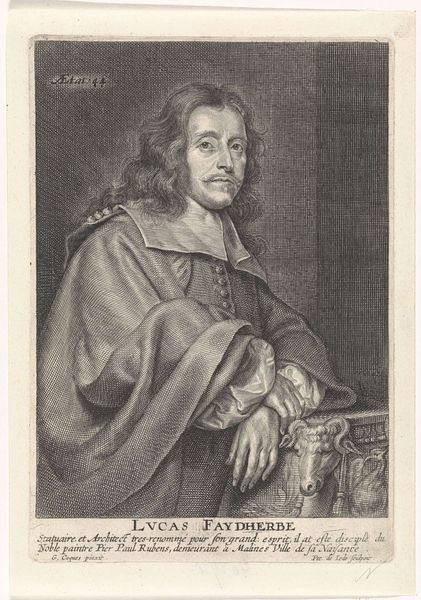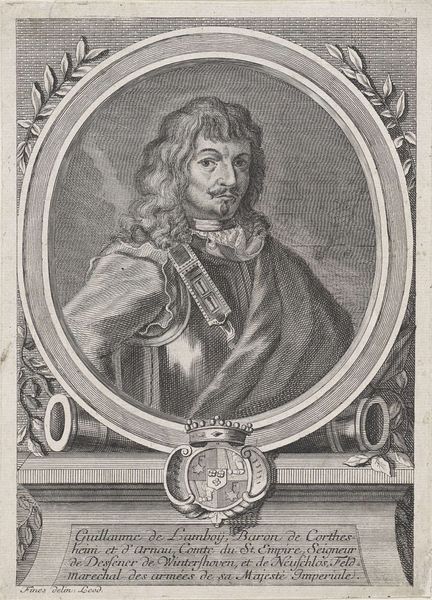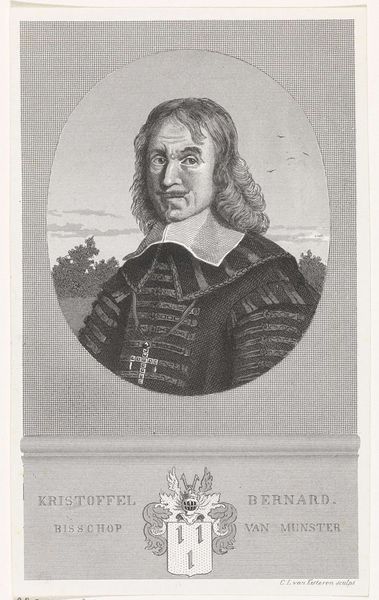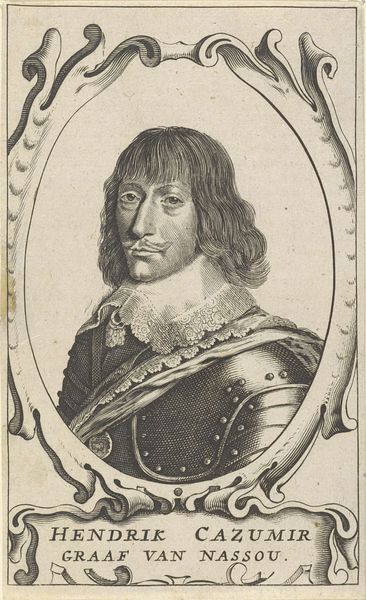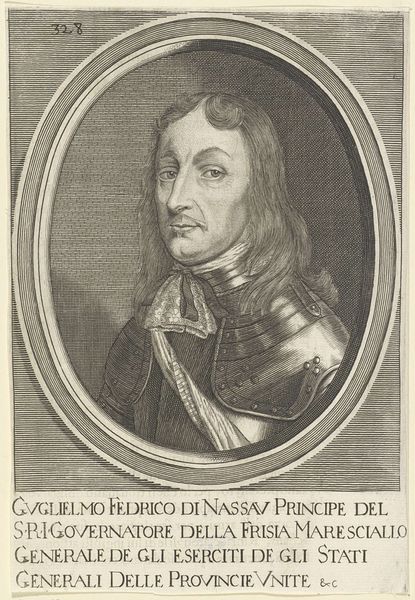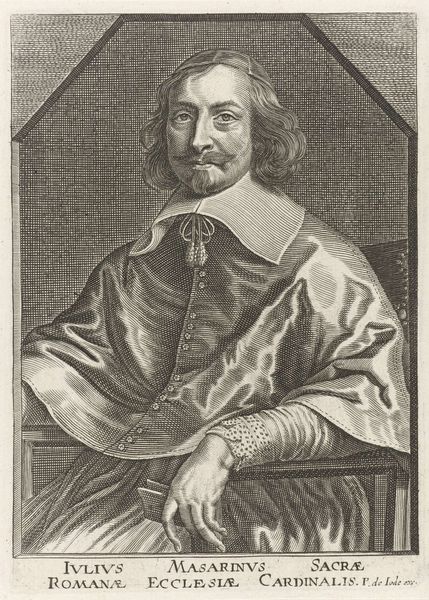
print, engraving
#
portrait
#
facial expression drawing
#
baroque
# print
#
portrait reference
#
portrait drawing
#
history-painting
#
engraving
#
portrait art
Dimensions: height 194 mm, width 140 mm
Copyright: Rijks Museum: Open Domain
This print depicting Claudius de Grieck was made by Frederick Hendrick van den Hove in the 17th century. It is an engraving, a process involving meticulous work. The artist would have used a tool called a burin to incise lines into a metal plate, likely copper. The plate is then inked, and the surface wiped clean, leaving ink only in the engraved lines. Paper is laid on top, and run through a press, transferring the image. Consider the qualities this process imparts: precision, detail, and reproducibility. Engraving was crucial for disseminating images and knowledge in the early modern period. It allowed for the relatively inexpensive creation of multiple copies, making imagery accessible to a wider audience beyond the wealthy elite. The sharp lines create a sense of formality and clarity, befitting the sitter’s role as a lawyer. The very act of creating this portrait, and distributing it, speaks to the rise of a new professional class, and a society increasingly reliant on visual communication. It’s a reminder that even seemingly straightforward images are deeply embedded in their social and economic context.
Comments
No comments
Be the first to comment and join the conversation on the ultimate creative platform.
